TON DUC THANG UNIVERSITY FACULTY OF LABOUR RELATIONS & TRADE UNIONS
Chapter 4: The role of the economic, technological, and demographic environments Lecturer: Hoang Thi Tuong Vinh, MA.
COURSE CODE: A03051 Chapter 4
The importance of bargaining power The economic context The Technological context and the demographic
environment
COURSE CODE: A03051 Chapter 4
What are the three types of “Bargaining power”
COURSE CODE: A03051 Chapter 4
Total power – total profits (financial resources) available to labor and management
Relative power – the “relative” strength of labor & management in dividing up profits
Political Power – ability to influence
government action (either through policies or as an employer)
COURSE CODE: A03051 Chapter 4
Total bargaining power
◦ degree of competition of firm (monopoly, oligopoly) ◦ Overall state of economy
COURSE CODE: A03051 Chapter 4
Unions
◦ Ability to shut down production (organize & sustain strike, “blue
flu,” “work to rule,” occupation) ◦ Organize and sustain strike/action ◦ Worker solidarity (the public and
other unions)
Employers
◦ Ability to withstand union action ◦ Effect on sales, profits, customers & public
COURSE CODE: A03051 Chapter 4
Calculating Relative Bargaining Power
COURSE CODE: A03051 Chapter 4
Prof. John T. Dunlop Industrial Relations Systems
3 main influences shape LR environment: (Environment shapes us & we seek to shape it) Economic context
◦Size, quality & skill of workforce (education) ◦Population trends (Urbanization & migration trends, child labor, aging) ◦Global markets and globalization
Technological context
◦Tools, materials, energy forms (level of development) ◦Organization & control of work (production systems, deskilling)
Locus of power in society
◦Distribution of power – where and how important decisions are made (regions, national, international)
Authors also added demographic context
COURSE CODE: A03051 Chapter 4
Unions sometimes moderate their wage demands (employer ability to pay, fear of cuts in employment)
NeoClassical Economists Alfred Marshall
Unions are most powerful when…. 1. Labor cannot be easily replaced in production (neither machines or
other workers)
2. Demand for final product is not sensitive to price increases 3. Cost of non-labor factors prohibits easy substitution for workers 4. Ratio of labor cost to total cost is small
COURSE CODE: A03051 Chapter 4
1. Employer requires 100 workers, no matter what, in
order to get the job done.
2. The public will buy the same amount. They don’t seem
to care how much it costs.
3. The workers have special skills that are hard to learn.
These workers are hard to replace.
4. The technology and materials cost a lot compared to
the labor so the company has invested a lot in the factory.
COURSE CODE: A03051 Chapter 4
The workload can be spread around fewer
workers;
The public won’t pay more; they will stop buying or go next door if the price of the product goes up;
Untrained workers can do the job OK;
The equipment is not a huge investment, but labor costs are a major share of the cost of production.
COURSE CODE: A03051 Chapter 4
Why would Vietnam want to develop more highly
trained workers?
What effect would that have on the ability of
workers to bargain?
Why would Viet Nam want more investment in
high-tech equipment that costs a lot?
What effect would that have on bargaining?
COURSE CODE: A03051 Chapter 4










![Mẫu Hợp đồng lao động thực hiện công việc hỗ trợ, phục vụ [Mới nhất]](https://cdn.tailieu.vn/images/document/thumbnail/2025/20250728/vijiraiya/135x160/3011753696761.jpg)

![Cẩm nang thực hiện Bộ luật Lao động 2019 tại doanh nghiệp [Chuẩn nhất]](https://cdn.tailieu.vn/images/document/thumbnail/2025/20251022/kimphuong1001/135x160/7131761110010.jpg)
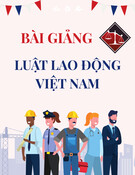
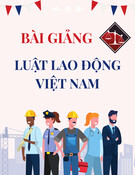
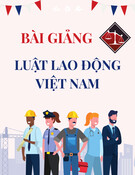
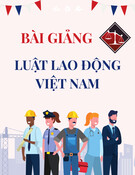
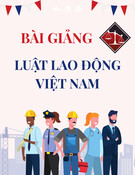
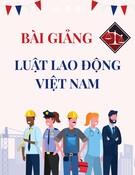
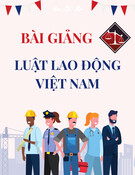
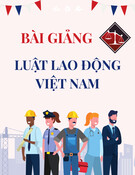
![Hỏi - đáp Luật Bảo hiểm xã hội: Tài liệu truyền thông [chuẩn nhất]](https://cdn.tailieu.vn/images/document/thumbnail/2025/20251009/kimphuong1001/135x160/31581759995390.jpg)




